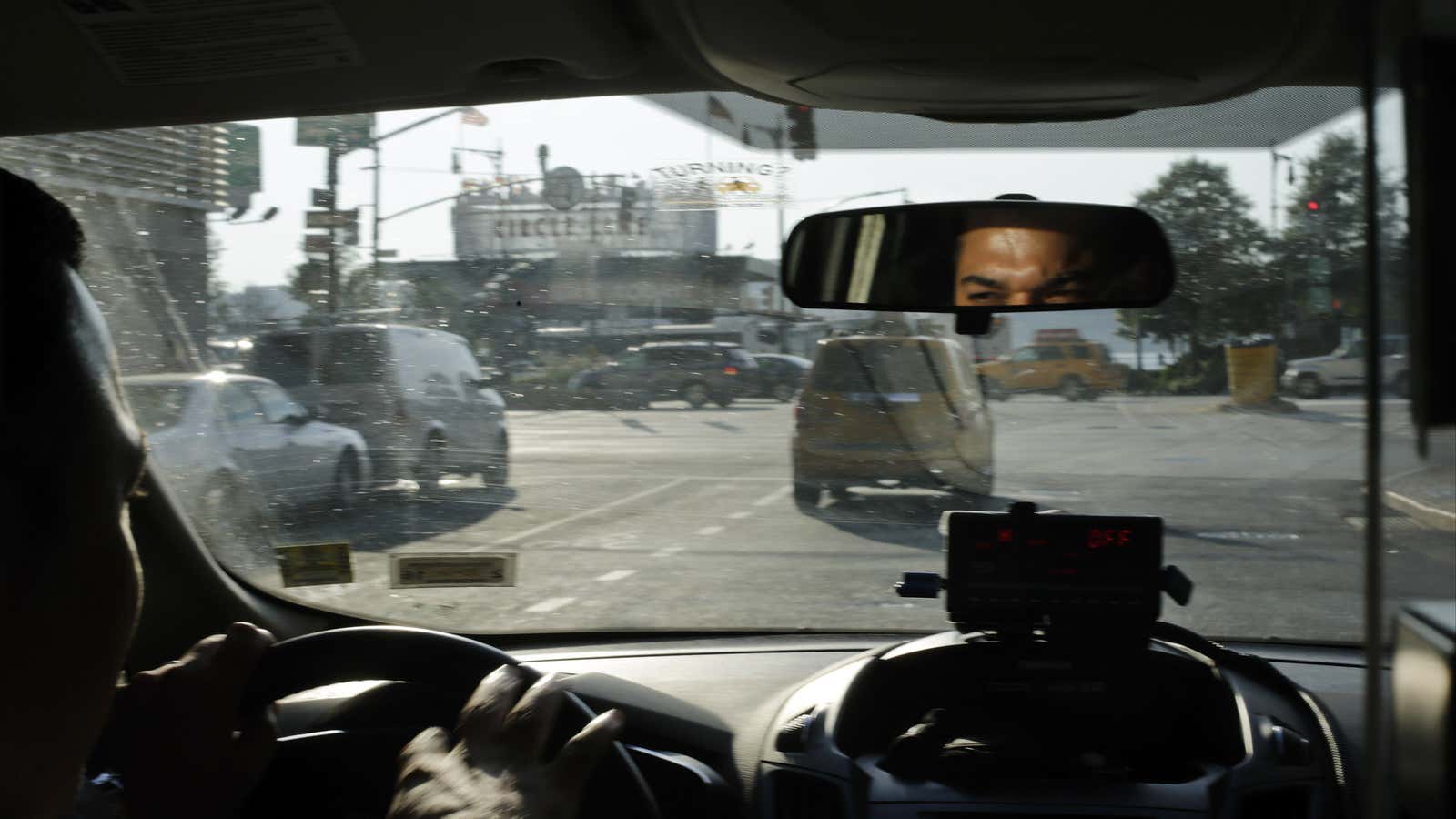Consult the fine print on Uber’s new earnings guarantees for drivers in more than 100 US and Canadian cities where the ride-hailing service cut fares this month, and you’ll notice an interesting pattern.
The data above is from SherpaShare, a research and analytics platform for on-demand workers. In each of the 11 cities SherpaShare has details on, the guarantees vary by time and day of the week—with the highest amounts reserved for periods when demand tends to be higher: Morning rush, evening rush, weekend nights.
That makes sense! Uber expects to get more ride requests during those times—likely triggering surge pricing—so it can safely promise more money to drivers who agree to work them. To qualify for the guarantees, which are meant to compensate drivers for the lower fare rates, Uber also requires drivers to accept 90% of trips.
Essentially, Uber is incentivizing drivers to work particular hours—ones in which it expects higher and more frequent fares—by guaranteeing better payments. What’s wrong with that?
Technically, nothing. The hourly variations in Uber’s earnings guarantees appear to be pegged to typical supply-and-demand fare patterns in those cities. Drivers, who set their own schedules, have always been free to work only during hours with increased demand—and some of the most enterprising do. Uber’s fare guarantees are simply formalizing what’s already dictated by economics.
“As is always the case, drivers can choose if, when, and for how long they work, or whether they work at all,” an Uber spokeswoman says of the new incentives. ”Many drivers will make more than these hourly guarantees, as there is no set limit on what a driver can make in a given hour.”
But it’s one thing to leave something to the whims of supply and demand, and another to design incentives that skew the equation. Sure, Uber’s not requiring its drivers to work any particular hours, but for those worried about making enough money on Uber’s new, lower fares, the promise of higher pay guarantees during peak periods may be hard to ignore.
Lest this all seem needlessly academic, remember that Uber is embroiled in a certified class-action lawsuit in California over how it classifies drivers. Uber insists that drivers on its platform are independent contractors, a characterization with immense benefits for Uber. Contractors aren’t eligible for the same employment protections as traditional employees, such as social security and employer-provided health insurance. And they’re the ones responsible for on-the-job expenses like gas and vehicle maintenance, which for drivers can add up fast.
Uber’s much-touted defense in the suit is that drivers love Uber because they get to be their own boss, to set their own schedule and use Uber “on their own terms.” Were drivers to be reclassified as employees, the company has warned, “they would have set shifts, earn a fixed hourly wage, and be unable to use other ridesharing apps.” The point is, for Uber drivers to be independent contractors, they almost definitely can’t be working set shifts. That would be a serious indication that the company is treating them like employees.
So here’s the question: If Uber’s price cuts and subsequent fare guarantees are causing drivers to work particular time windows (like shifts), for a minimum hourly rate (like a wage), during which they have to accept 90% of trips (and probably can’t take any from competitors)—how is that much different?
